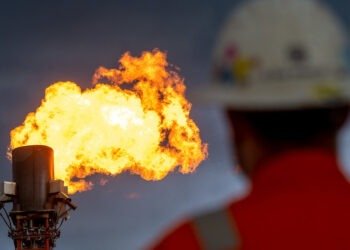The process to choose a new leader for the Catholic church, the conclave, is formally underway in the Sistine Chapel at the Vatican.
The 133 voting cardinals are casting ballots in the highly secretive process of choosing the church’s new leader following the death of Pope Francis last month.
Speculation over who will succeed Francis was rife even before his death.
The doors at the Sistine Chapel have been locked to outsiders, beginning the secretive process that will culminate in a new Pontiff.
No cameras are allowed inside during the conclave, but before the chapel went into lockdown, the cardinals took their oath of secrecy.

If a cardinal receives more than two-thirds of the vote, the church will have a new Pope.
If no one does, voting will resume tomorrow.
The voting procedure will be following a centuries-old tradition.
Nine cardinals will be chosen at random to perform specific roles; three Scrutineers will oversee the voting, three Infirmarii will collect votes from those too sick to be in the chapel and three Revisers will verify the results.
In order of seniority, the cardinals will walk to the table in front of the altar, where the Scrutineers sit, to cast their ballot.
After all ballots are cast, the first Scrutineer shakes the urn to mix them up. The third Scrutineer counts the ballots. If the number of ballots doesn’t match the number of electors, the ballots are burned, and the vote is redone.
If the number is correct, the first Scrutineer unfolds the ballot, notes the name and passes it to the second Scrutineer.
The second Scrutineer notes the name and passes the ballot to the third Scrutineer.
The last Scrutineer reads the name aloud for all the cardinals to hear and records the vote. As the name is read out, the Scrutineer threads a needle through the ballot with the word “Eligo” (“I elect”) and secures it to the other ballots.
After reading out all the names, the cardinals will learn if they have elected a new pope. For each round, the sewn-together ballots are placed in a third urn for burning.
At the end of each voting session, the cardinals will burn the ballots, and the resulting smoke will tell us how the vote went.

Black smoke means the cardinals haven’t reached a consensus, and white smoke means there’s a new pope.
It is the largest and possibly the most unpredictable conclave to ever take place.
Andrea Vreede, the Vatican correspondent for NOS, the Dutch public radio and TV network, stated, “These men of faith are entering [the conclave] believing that God has already chosen the next Pope.”
“Now they have to figure out what that choice is. It is unpredictable because there are many new electors who do not know each other very well, because Francis never organised cardinal meetings, so they were never invited to assist or advise the Pope.
“So the one thing they can agree on, whether they are far left or far right, is that they all want more involvement in the government of the next Pope.”
Andrea Vreede
Another thing they all seem to agree on is that the conclave must be kept short, perhaps lasting no more than three to four days.
Severina Bartonitschek, the Vatican correspondent for KNA, a Catholic news agency in Germany, said, “I think they already have someone in mind.”
“And the main job for the new Pope will be unifying the church. This is always a job for any Pontiff but it will be especially critical for the next Pope. Yes, he will have to handle evangelisation but also issues like the abuse cases. We need to have a Pope who is not afraid to fight against this issue.”
Severina Bartonitschek
READ ALSO: Pakistan Claims “Operation Sindoor” Targeted Civilian Areas




















